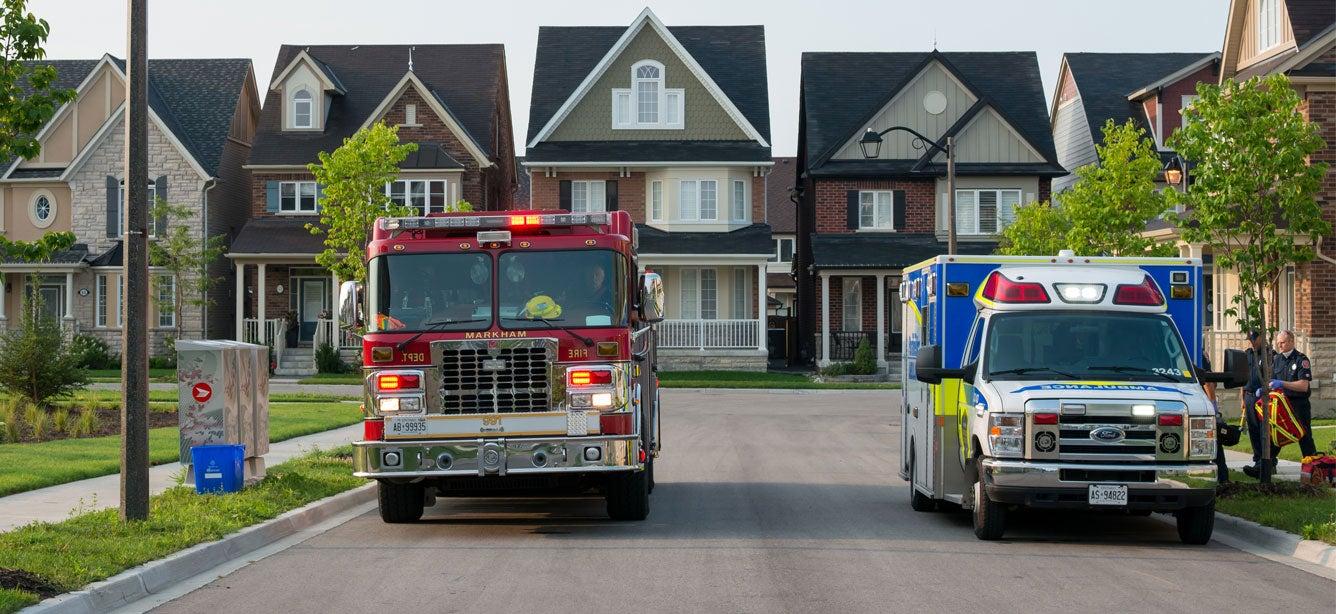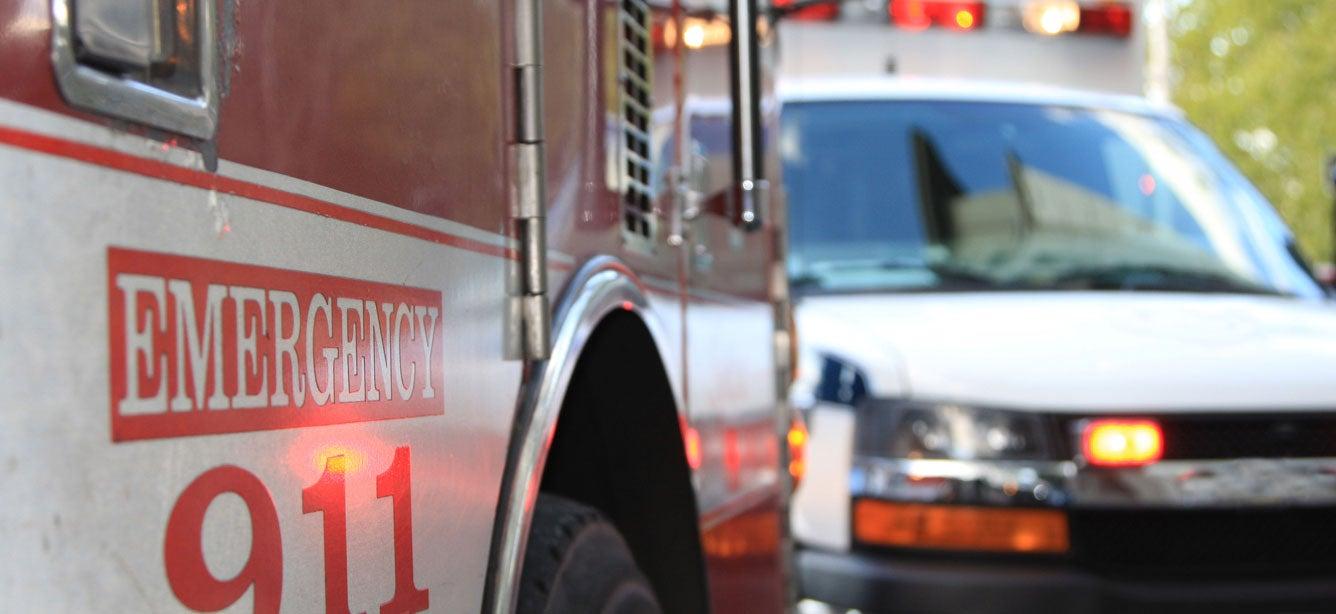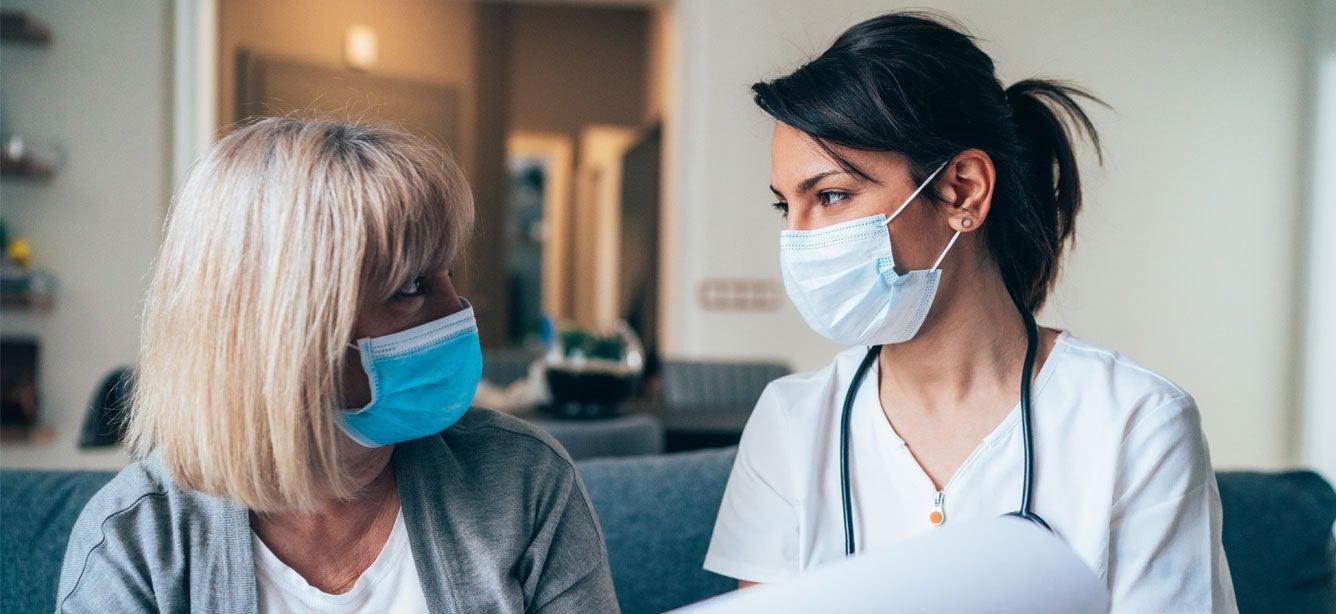Strengthening Falls Prevention Efforts with the Help of First Responders
8 min read

Related Topics
Among people aged 65 years and older, falls are the leading cause of emergency department visits and account for 17% of all 911 calls. Firefighters and EMS can have a key role in falls prevention efforts, and often have partnership frameworks to consider. Here are six examples you can explore on how community-based organizations have collaborated with local emergency medical services and fire departments to increase awareness and public education around falls prevention.
You can also gain additional strategies and best practices for these community partnerships by attending the Fire & Falls Webinar Series this September.
1. Enhancing Communication between first responders and physicians
Recognizing the lack of formal training and infrastructure to support their fall prevention activities, a community paramedicine agency in Ohio established a partnership with a group of health care providers and researchers at The Ohio State University and its affiliated medical center. The goal of the partnership was to devise and implement a quality improvement initiative that could enhance the community paramedic team’s operations that could consistently help reduce falls and avertable transports to the hospital. The initiative was named Community-centered Fall Intervention Team (Community-FIT) with the plan to devise a system that could support systematic fall prevention at the individual patient and community level. This partnership included:
- Formalizing a multi-stakeholder learning network called Community-FIT collaborative to expand the support and training for falls prevention strategies for a community paramedicine agency, including:
- Training fire/paramedic agency personnel in home environment evaluations for falls risk and home modifications to address these risks, such as grab bar installation and night light distribution;
- Optimizing the electronic health record system to combine with workflow communication between 911 scene and community paramedic home visits;
- Gathering and analyzing 911 call records to evaluate system-level outcomes; and
- Investing in partnership growth activities such as going on ride-alongs to 911 falls calls and home visits with the community paramedicine team and inviting Fire/paramedicine personnel to observe patient flows at the hospital when a patient arrives due to a fall or fall call.
The Community-FIT system is a potential mechanism to radically reduce falls by identifying older adults in need of falls prevention support and operating as an intervention through enhanced communication at the system level and providing falls prevention home modifications during home visits. Watch this Tedx Talk to learn more.
2. Engaging faith-based organizations for fire and falls awareness
Understanding that not all older adults reside at a senior living facility, the fire department in Farmington Hills, Michigan routinely presents on fire and falls safety to the Farmington Area Interfaith Association, a faith-based organization where local faith leaders congregate and discuss ongoing interfaith projects. Faith leaders take what they’ve learned and share with their members and invite the Farmington Hills Fire Department to their immediate congregation to expand on the important issues of fire and falls. This presents members the opportunity to ask questions and set up an appointment for a home assessment, where a licensed social worker visits the home and provides practical solutions to make the home safe from fire and fall hazards. The Farmington Hills Fire Department also collaborates with the trauma services, who identifies frequent fallers residing in senior group living, allowing the fire department to present at the facility about the importance of fire and falls prevention.
These strategies have been effective because:
- The fire department can reach older adults in senior living homes and those residing with family or independently;
- Presentations on fire and falls prevention help raise community awareness;
- Faith leaders and organizations can lend their reputation and influence health behavior changes among members; and
- It creates a trusting environment for older adults to seek help from community members.
3. Establishing a community-engaged network to refer older adults to falls prevention programming
The University of Iowa Injury Prevention Research Center evaluated the Remembering WhenTM program, a fire and falls prevention educational program for older adults. An outcome of this evaluation was a need to fill the gap in falls prevention education and resulting falls risk reduction action. As a result, researchers developed the Remembering When TM Plus (Partners Linking yoU to Services) program, which incorporates a referral component for fire departments delivering the program. A comprehensive toolkit was developed for community organizations interested in establishing an infrastructure to actively refer older adults to falls prevention programs in their communities.
This toolkit includes:
- How to identify falls prevention efforts and resources at the state and local-levels and how to make sense of the data;
- Key steps for developing a Stakeholder Advisory Board (SAB) including local fire departments to collaboratively develop a referral structure for the Remembering WhenTM Plus program;
- Sample workflow plans and referral tools for a streamlined falls prevention program referral system that fits within existing service provision infrastructure; and
- Example evaluation activities and sustainability strategies for ongoing program support.
4. Utilizing students to conduct home assessments
In collaboration with Vidant Medical Center and Greenville Fire/Rescue, the Eastern North Carolina Falls Prevention Coalition leveraged college students to conduct home safety inspections for older adults residing in rural areas of Pitt County, North Carolina. Students from the Gerontology Program at Pitt Community College and the B.S. Public Health Program at East Carolina University were trained to identify home hazards. Greenville Fire/Rescue reviewed the inspections and provided smoke alarms and fire safety education to make the home safe from fire and falls. Additionally, based on the inspection and evaluation, the Eastern North Carolina Falls Prevention Coalition will refer older adults to falls prevention programs such as A Matter of Balance and Arthritis Foundation Exercise Program. Connecting older adults to falls prevention programs specific to their needs will help decrease the likelihood of a fall and maintain their independence.
This is a community effort to:
- Engage students to participate in fire and falls efforts of home assessments;
- Address social isolation for older adults who are homebound;
- Increase education and public awareness around fire and falls to older adults; and
- Inform older adults of available falls prevention services, such as evidence-based falls prevention programs.
5. Using 9-1-1 falls data to identify patterns and predictors of falls
In 2017, The Better Living for Seniors Falls Prevention Committee and Pinellas Park Fire Department collaborated to find resources to lessen EMS 911 falls calls.
The committee and fire department worked together to:
- Hosted an innovative fall prevention comedy play, titled “Denying Gravity”, put on by SAGES (Senior Actors Guild & Education Services), a local volunteer senior acting troupe and worked with a production company to develop a falls prevention documentary, “Saving Claire”;
- Held a post-viewing panel of experts comprised of physical therapists, home modifications professionals, doctors, firefighters, and others to answer community falls prevention questions. Since the onset of the pandemic, the Pinellas Park Fire Department has streamed the documentary on their community cable stations and website. After the showing, a live interactive talk show featuring a panel of experts fielded questions from the viewers;
- Conducted a series of quarterly community provider symposiums for EMS/fire departments and facility directors and staff to share information and identify strategies to prevent falls;
- Collaborated with Pinellas County Safety & Emergency Services 911 database analysts to collect and analyze 911 falls-related calls from more than 60 different facilities to identify patterns and predictors;
- Formed the Falls Free Pinellas Falls Prevention Coalition and host monthly “Mission: Accessible” meetings to help older adults who use 911 for assistance getting in and out of their homes and seek resources to assist with ramp installations;and
- Conducted intergenerational falls prevention activities, such as the Falls Free Flower Craft, hosted by the fire department educators.
6. Leveraging retired health care professionals
The Saskatoon Fire Department in Saskatchewan, Canada has developed a system to connect the older adults they lift after a fall to available falls prevention services. At each lift assist, the Saskatoon Fire Department will ask for consent to forward the older adult’s contact information to the Saskatchewan Health Authority, who follows up and connects the older adult to social, mental, and physical health services. For older adults who do not sign consent, the Saskatoon Fire Department uses volunteers to follow up with them. These volunteers are retired health care professionals ranging from retired RNs, pharmacists, occupational therapists, physical therapists to dieticians. Volunteers are trained in fall prevention and bring a wealth of knowledge to each home visit.
Using retired health care professionals to follow up on lift assist cases has been a success because:
- 57% of older adults who need a lift assist do not consent to being referred to the Healthy Authority
- 68% of recommendations made to the older adults who had a home visit from the volunteers were followed
Since this system was put in place, the Saskatoon Fire Department has seen a reduction in the number of times the fire department has responded to frequent falling elders while helping older adults maintain their dignity and independence.



